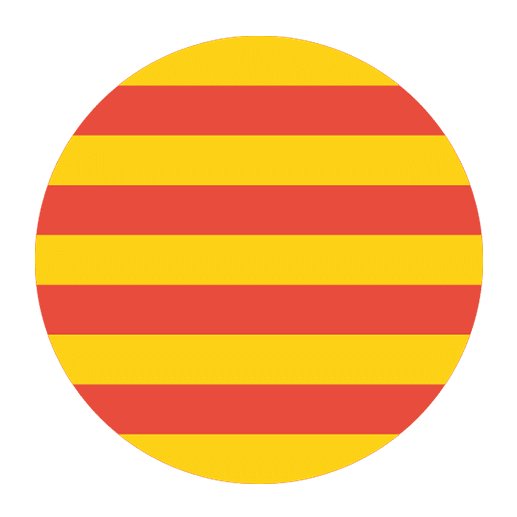Learning a new language is always an exciting journey, and for those interested in the rich cultural heritage of the Mediterranean region, Catalan offers a unique and rewarding experience. Catalan is not only a language but also a gateway to understanding the vibrant traditions, literature, and history of the Catalonia region in Spain, as well as parts of France, Italy, and the tiny nation of Andorra.
Catalan is a Romance language, closely related to Spanish, French, and Italian, yet it stands distinct with its own set of phonetic, grammatical, and lexical characteristics. In this article, we’ll provide a comprehensive beginner’s overview of the Catalan language, exploring its history, essential grammar rules, pronunciation, vocabulary, and tips for effective learning.
History and Significance of Catalan
The Catalan language has a rich history that dates back to the early Middle Ages. It emerged from the vulgar Latin spoken by the Romans in the northeastern Iberian Peninsula. By the 9th century, Catalan had developed its own distinct identity and began to be used in written documents.
During the Middle Ages, Catalan experienced a golden age, particularly in the realms of literature and law. The language was widely used in the courts and administrations of the Crown of Aragon, which included territories such as modern-day Catalonia, Valencia, and the Balearic Islands. Catalan literature flourished with notable works like the epic poem “Tirant lo Blanch” by Joanot Martorell.
However, the political landscape shifted in the 18th century with the War of the Spanish Succession, leading to the suppression of Catalan in favor of Castilian Spanish. Despite these challenges, Catalan has experienced a revival in the 19th and 20th centuries, particularly during the Renaixença (Renaissance) period, which emphasized Catalan culture and language.
Today, Catalan is an official language in Catalonia, the Balearic Islands, and Valencia (where it’s known as Valencian). It is also spoken in parts of Aragon, the Roussillon region in France, the city of Alghero in Sardinia, Italy, and is the national and official language of Andorra.
Essential Grammar Rules
Understanding the fundamental grammar rules of Catalan is crucial for constructing sentences correctly and communicating effectively. Here are some key aspects of Catalan grammar:
Nouns and Articles
Catalan nouns have gender (masculine or feminine) and number (singular or plural). The definite and indefinite articles must agree with the gender and number of the noun.
– Definite Articles:
– Masculine singular: el (e.g., el llibre – the book)
– Feminine singular: la (e.g., la casa – the house)
– Masculine plural: els (e.g., els llibres – the books)
– Feminine plural: les (e.g., les cases – the houses)
– Indefinite Articles:
– Masculine singular: un (e.g., un llibre – a book)
– Feminine singular: una (e.g., una casa – a house)
– Masculine plural: uns (e.g., uns llibres – some books)
– Feminine plural: unes (e.g., unes cases – some houses)
Adjectives
Adjectives in Catalan must agree with the gender and number of the nouns they describe. They typically follow the noun they modify.
– Example:
– Masculine singular: un llibre interessant (an interesting book)
– Feminine singular: una casa gran (a big house)
– Masculine plural: uns llibres interessants (some interesting books)
– Feminine plural: unes cases grans (some big houses)
Pronouns
Pronouns in Catalan include subject pronouns, object pronouns, and possessive pronouns.
– Subject Pronouns:
– I: jo
– You (singular informal): tu
– He/She/It: ell/ella/això
– We: nosaltres
– You (plural informal): vosaltres
– They: ells/elles
– Object Pronouns:
– Direct: em (me), et (you), el/la (him/her/it), ens (us), us (you all), els/les (them)
– Indirect: em (to me), et (to you), li (to him/her), ens (to us), us (to you all), els/les (to them)
– Possessive Pronouns:
– My: meu/meva/meus/meves
– Your (singular): teu/teva/teus/teves
– His/Her: seu/seva/seus/seves
– Our: nostre/nostra/nostres
– Your (plural): vostre/vostra/vostres
– Their: seu/seva/seus/seves
Verbs
Catalan verbs are conjugated based on tense, mood, and subject. Here are some basic conjugations for the present tense of regular verbs in the three conjugations (-ar, -er, -ir):
– First conjugation (-ar):
– Parlar (to speak)
– Jo parlo
– Tu parles
– Ell/Ella parla
– Nosaltres parlem
– Vosaltres parleu
– Ells/Elles parlen
– Second conjugation (-er):
– Beure (to drink)
– Jo bec
– Tu beus
– Ell/Ella beu
– Nosaltres bevem
– Vosaltres beveu
– Ells/Elles beuen
– Third conjugation (-ir):
– Viure (to live)
– Jo visc
– Tu vius
– Ell/Ella viu
– Nosaltres vivim
– Vosaltres viviu
– Ells/Elles viuen
Sentence Structure
Catalan typically follows a Subject-Verb-Object (SVO) sentence structure, similar to English. However, word order can be flexible for emphasis or stylistic reasons.
– Example:
– Standard: Jo menjo una poma. (I eat an apple.)
– Emphasis on object: Una poma, jo menjo. (An apple, I eat.)
Pronunciation
Catalan pronunciation can be challenging for beginners, but with practice, it becomes manageable. Here are some key aspects of Catalan phonetics:
Vowels
Catalan has seven vowel sounds, which can be short or long. The vowels are:
– a: similar to the ‘a’ in “car”
– e: similar to the ‘e’ in “bed”
– é: similar to the ‘a’ in “cake”
– i: similar to the ‘ee’ in “see”
– o: similar to the ‘o’ in “pot”
– ó: similar to the ‘o’ in “go”
– u: similar to the ‘oo’ in “food”
Consonants
Catalan consonants are generally similar to those in English, but there are some notable differences:
– ‘c’ before ‘e’ or ‘i’ is pronounced as ‘s’ (e.g., cel – sky)
– ‘g’ before ‘e’ or ‘i’ is pronounced as the ‘g’ in “measure” (e.g., gel – ice)
– ‘ll’ is pronounced as a palatal lateral sound, similar to the ‘lli’ in the English word “million” (e.g., lluna – moon)
– ‘ny’ is pronounced like the ‘ny’ in “canyon” (e.g., any – year)
– ‘r’ is rolled or tapped, similar to the Spanish ‘r’ (e.g., rosa – rose)
Basic Vocabulary
Building a foundational vocabulary is essential for any language learner. Here are some common words and phrases in Catalan to get you started:
Greetings and Farewells
– Hello: Hola
– Good morning: Bon dia
– Good afternoon: Bona tarda
– Good evening/night: Bona nit
– Goodbye: Adéu
– See you later: Fins després
Common Phrases
– Please: Si us plau
– Thank you: Gràcies
– You’re welcome: De res
– Excuse me: Perdó
– Yes: Sí
– No: No
Numbers
– One: Un
– Two: Dos
– Three: Tres
– Four: Quatre
– Five: Cinc
– Six: Sis
– Seven: Set
– Eight: Vuit
– Nine: Nou
– Ten: Deu
Days of the Week
– Monday: Dilluns
– Tuesday: Dimarts
– Wednesday: Dimecres
– Thursday: Dijous
– Friday: Divendres
– Saturday: Dissabte
– Sunday: Diumenge
Months of the Year
– January: Gener
– February: Febrer
– March: Març
– April: Abril
– May: Maig
– June: Juny
– July: Juliol
– August: Agost
– September: Setembre
– October: Octubre
– November: Novembre
– December: Desembre
Basic Questions
– What is your name?: Com et dius?
– My name is…: Em dic…
– How are you?: Com estàs?
– I’m fine, thank you: Estic bé, gràcies
– Where are you from?: D’on ets?
– I’m from…: Sóc de…
Tips for Effective Learning
Learning Catalan, like any language, requires dedication, practice, and exposure. Here are some tips to help you on your language-learning journey:
Immerse Yourself
One of the most effective ways to learn Catalan is to immerse yourself in the language and culture. If possible, spend time in Catalonia or other Catalan-speaking regions. Engage with native speakers, participate in local events, and practice speaking as much as possible.
Use Language Learning Apps
Language learning apps like Duolingo, Babbel, and Memrise offer Catalan courses that can help you build vocabulary, practice grammar, and improve pronunciation. These apps provide interactive exercises and quizzes to reinforce your learning.
Practice with Native Speakers
Find language exchange partners or tutors who are native Catalan speakers. Platforms like Tandem, HelloTalk, and iTalki can connect you with people who can help you practice speaking and listening skills.
Read Catalan Literature
Reading books, newspapers, and online articles in Catalan can help you improve your reading comprehension and expand your vocabulary. Start with simple texts and gradually progress to more complex literature.
Watch Catalan Media
Watching TV shows, movies, and videos in Catalan can enhance your listening skills and expose you to different accents and dialects. Look for Catalan-language content on platforms like YouTube, Netflix, and TV3.
Join Language Classes
Consider enrolling in Catalan language classes offered by language schools, universities, or online platforms. Structured courses can provide a systematic approach to learning and offer opportunities for interactive practice.
Practice Regularly
Consistency is key to language learning. Set aside time each day to practice Catalan, whether it’s through speaking, listening, reading, or writing. Regular practice will help reinforce your skills and build confidence.
Conclusion
Learning Catalan opens up a world of cultural richness, historical depth, and linguistic diversity. As you embark on this journey, remember that patience and persistence are essential. Embrace the challenges and celebrate your progress along the way.
By understanding the history, grammar, pronunciation, and vocabulary of Catalan, you are well-equipped to begin your language-learning adventure. Whether you’re interested in exploring Catalonia’s vibrant culture, connecting with Catalan-speaking communities, or simply expanding your linguistic horizons, mastering Catalan will undoubtedly be a rewarding experience. Bon viatge! (Have a good journey!)

